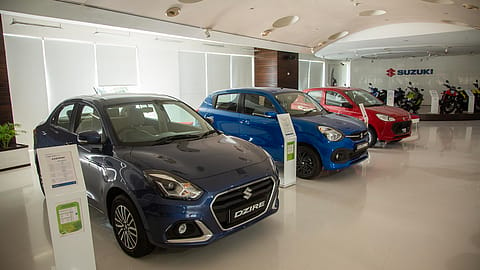Retail auto sales hit an all-time high growth of 40.5% boosted by GST 2.0 and rural resurgence: FADA
After a 21-day lull, the auto industry has witnessed a hurdle-race-style recovery in demand, led by rural India.

The overall retail auto sales in October and the 42-day festive period have hit an all-time high growth of 40.5%, the Federation of Automobile Dealers Association (FADA) said on Friday, buoyed by the GST reforms and a resurgence in the rural markets—with both passenger vehicles and two-wheelers achieving lifetime highs—in a hurdle-race-style rebound in demand.
“After an almost quiet September for the first 21 days due to the GST 2.0 transition, October witnessed a swift rebound—almost like a hurdle race where pent-up demand passed the baton to festive sentiment and tax-cut excitement, propelling sales to historic levels,” said CS Vigneshwar, president, FADA, in a statement.
According to Vigneshwar, the introduction of the new tax structure for automobiles under GST 2.0 proved transformational, lowering the GST rates on small cars, making vehicle ownership more attainable, especially for first-time car buyers who are price-sensitive. “This affordability boost, timed perfectly with the festive season, turned sentiment into action,” he added. Dealers also reported more substantial foot traffic, which, in tandem with better sentiment, led to extremely high conversion rates.
Segment-wise, two-wheelers have surged 52% year-on-year in October, supported by the trifecta of the aforementioned factors—revival of demand in rural India, GST reductions, and the festive season rush. Passenger vehicles grew 11% year-on-year in October, breaching the five-lakh mark to close at 5.57 lakh units, the highest ever in India’s retail history. “Importantly, inventory levels eased by 5–7 days to 53–55 days, reflecting healthier supply alignment,” Vigneshwar added.
The standout story of the month was the rise of rural India, which became the true growth engine, according to Vigneshwar, with favourable monsoons, higher farm incomes, and government infrastructure push driving purchasing power. “Rural passenger vehicle sales grew over three times faster than urban, while rural two-wheeler growth nearly doubled urban rates, marking a structural shift in the demand map of India’s auto sector,” he added.
Insights from FADA’s dealer survey indicate that the industry expects the momentum from the festive surge to extend into November, though with a natural moderation after an all-time high October. Two-wheeler dealers foresee steady demand, driven by rural liquidity, wedding-related purchases, and spillover from festive bookings, supported by GST benefits and improved sentiment. Passenger vehicle dealers report a strong pipeline of undelivered festive bookings, better stock availability, and continued traction from the GST price correction.
Overall, dealer confidence remains upbeat yet measured—with 64% expecting growth, 27% anticipating a flat trend, and only 8% foreseeing a decline. The industry outlook for November can therefore be characterised as “cautious optimism”—a phase where the sector consolidates the extraordinary gains of the festive season while preparing for a stable close to the calendar year.